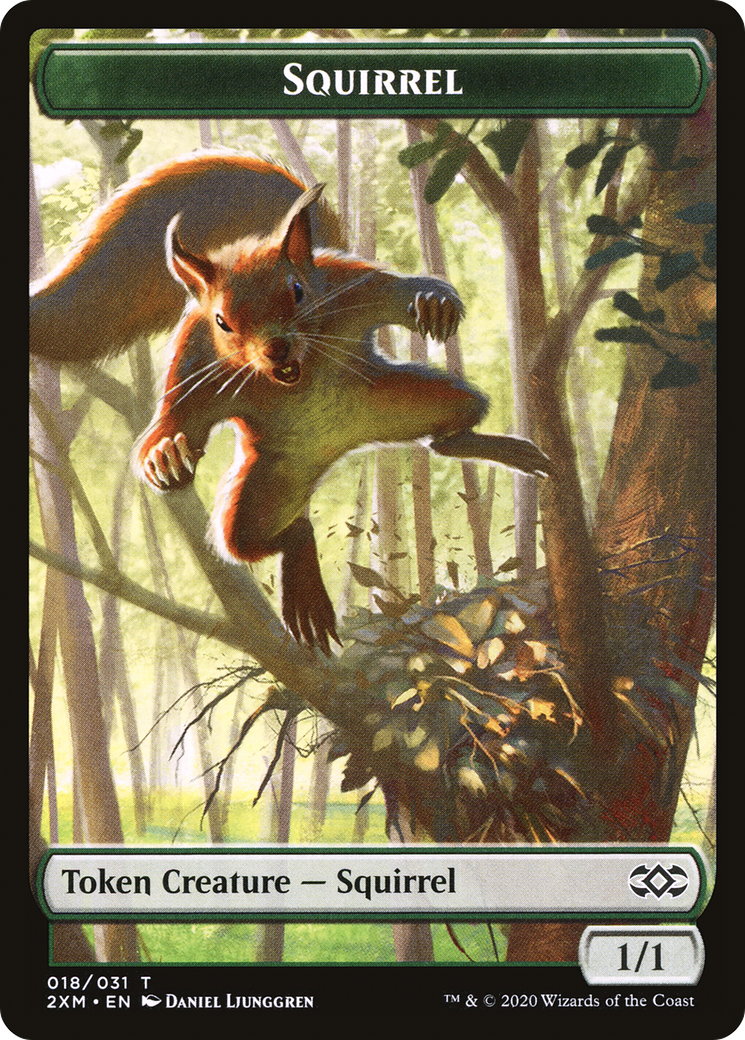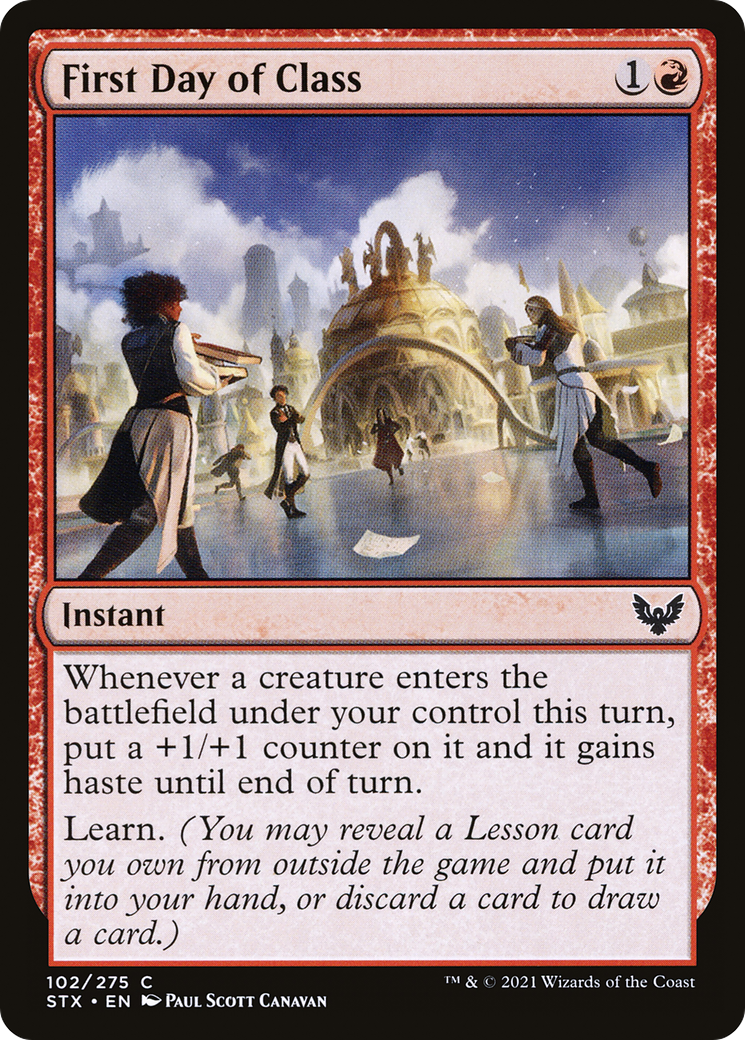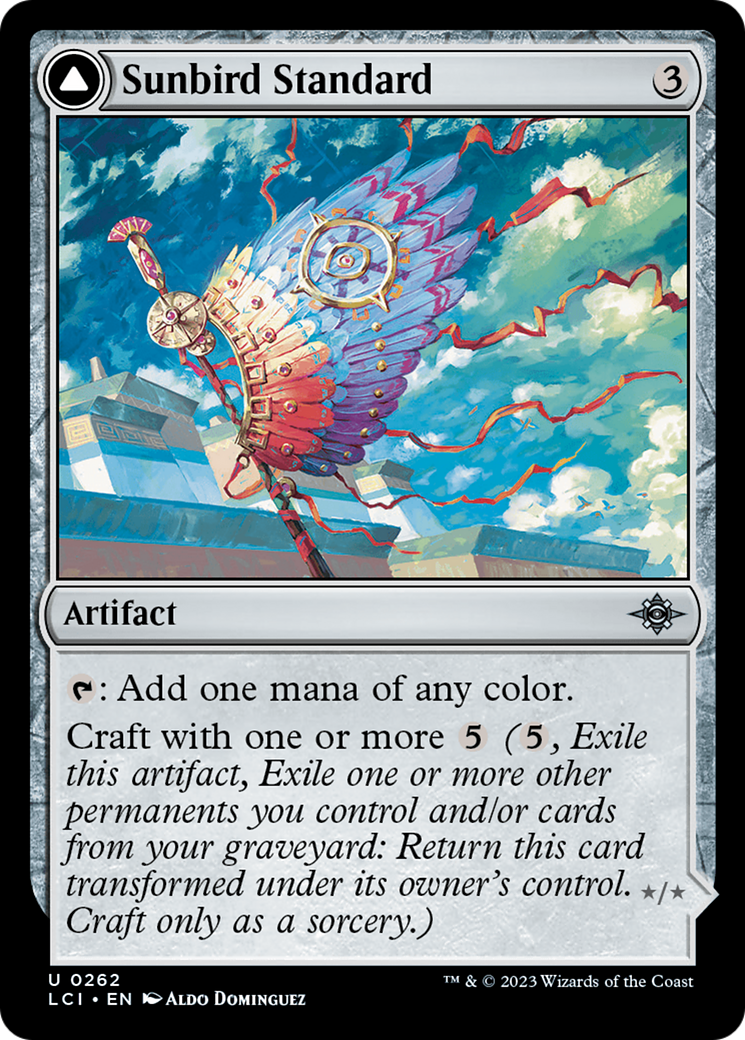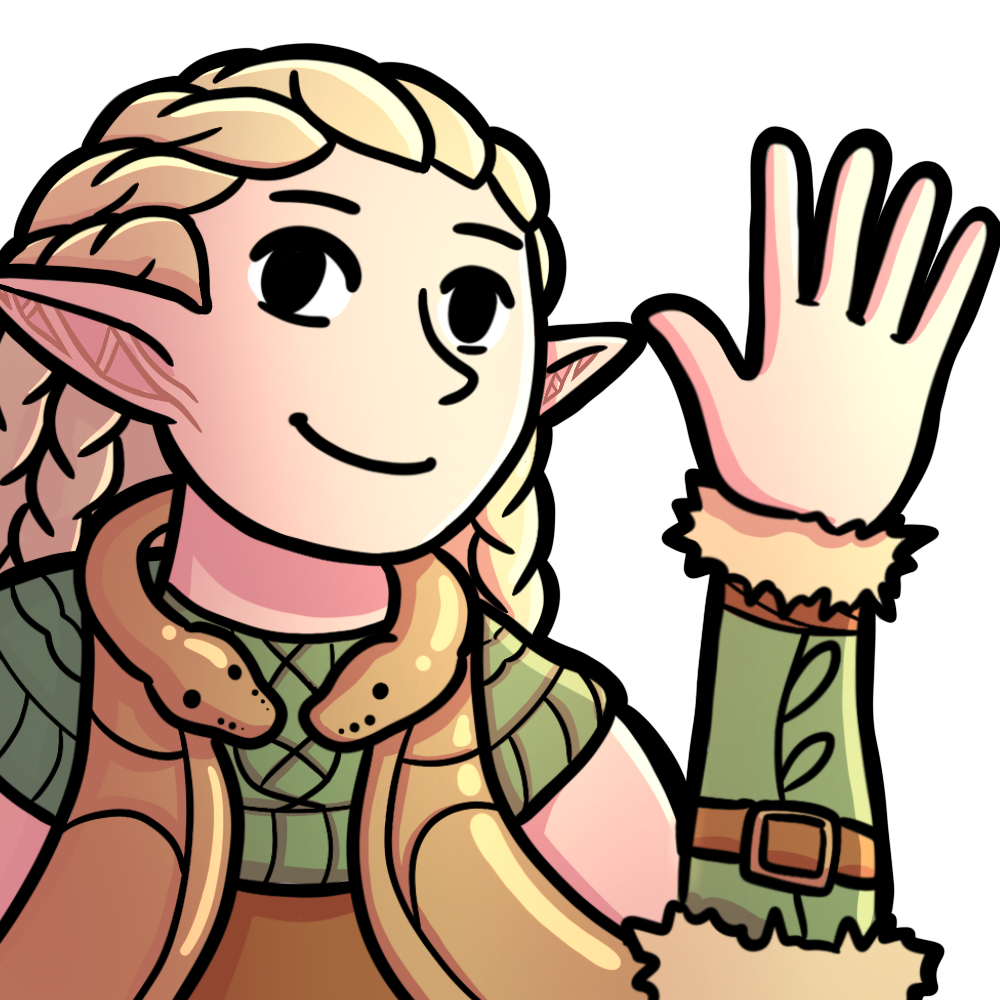Lessons Learned from 2023 Limited
01/05/2024
This has been a pretty good year of limited in my opinion. Admittedly, I may be a bit biased. The sets were a bit of a mixed bag - LTR and ONE certainly had their fair share of issues. But the highs were pretty high! WOE probably ranks among my top 5 limited sets ever, and LCI and MOM were both really cool and unique in how they explored new, interesting design spaces.
Today, I want to take a bit to reflect on this past year, specifically focusing on a few lessons I've learned that I can take into the next year of limited.
A Token of Appreciation

a squirrel token
Some of this year's top commons have had a theme: creatures that come with tokens.
ONE had
Chimney Rabble, MOM had Preening Champion, LTR had Dunland Crebain, LCI had Oltec Cloud Guard and Waterwind Scout, and one of the entire mechanics of WOE was all about tokens.It just turns out that on-tempo virtual card advantage reigns supreme in the modern era of limited. Instead of playing a clunky divination to get card advantage, I can play a card that affects the board both offensively and defensively in a flexible way and that can be leveraged to trade up on cards virtually.
It's honestly impressive how similar the designs of quite a lot of these top commons are: a body that can attack well (like a 3/3 haste or a 2/2 flier or a 1/1 flier that can become your ringbearer); paired with a bit of ground defense (a 1/1 token, or 2/2 in the case of Crebain) that doesn't do too much on its own but can at minimum chump and often helps with value double blocks.
It's very easy to dismiss such a token as of minimal value in theory, but set after set we can see the impact of these cards in practice. In 2022 we saw
Inspiring Overseer define a format - in 2023 we're seeing that making a 1/1 token is actually quite comparable in power to drawing a card!WOE was the epitome of this, as the bargain mechanic let you trade tokens for various benefits that ranged from mana discounts to virtual card advantage. I liked to joke that
Into the Fae Court basically cost 3 mana net - as the token could be bargained away for roughly 2 mana worth of value usually. And obviously this isn't entirely accurate, but it definitely gets at why the card performed so well compared to the mediocre Quick Study.And in general, more and more we're seeing designs that offer alternative card advantage that competes on rate with literally drawing cards. Divinations have continued their steady decline; rectangle theory is now king.
Going forward, we can probably expect this trend to continue. Instead of looking to literal card draw, look for the cards that can give card advantage while also impacting the board both offensively and defensively, in a flexible way.
Murders at Karlov Manor should be an excellent test of this - many of the mechanics involve clue tokens, which naturally tie both virtual token card advantage and literal card draw together. That should be quite interesting.
The Role of 17lands
17lands is an amazing service. It's an extremely important tool for reviewing logs, analyzing metagames, and evaluating cards; and has been a massive innovation in how we think of limited Magic these days. They're continuously improving it too, with new features like their manabase evaluator.
However, this year I found myself really decreasing how much I use and rely on 17lands.

First Day of Class
I've always recognized that 17lands has its limitations. After all, one of my first forays into content was in writing up underrated card threads on Twitter, in which I analyzed cards that I thought were way underrated on 17lands. I mostly focused on high-ALSA cards (ones that were passed very late), but this also sometimes overlapped with cards that I thought were being misused and thus had winrates that weren't representative of their power, as with the card
First Day of Class.But outside of some outliers, usually the data isn't that far off of my own estimation. Usually, by the end of the set, I find myself more-or-less agreeing with the broad strokes of how 17lands data portrays a set. I had gotten used to using 17lands as somewhat of a baseline, and then building my own opinions off of that baseline combined with my experiences.
Then came WOE and LCI.

Sunbird Standard, my pet card from LCI
For whatever reason, in WOE there were just much more cards than usual for which I just could not find myself agreeing with 17lands at all. Cards like
Cruel Somnophage and Hylda's Crown of Winter that I thought were strong rares had middling stats; cards like Witch's Mark I thought were 23rd cards but had okay stats; and there were just so many random commons like Unruly Catapult and Freeze in Place that I recognized as having a very specific niche but looked horrendous on 17lands.LCI was somehow even worse! At the start of the set, the whole community was convinced that the Jeskai color pairs were far and away better than green and black, and 17lands had the numbers to back that up. The format got a reputation for having a huge color imbalance problem, and descend and caves were written off as being failures; but that was way too premature, and in fact quite wrong in my opinion.
On the flipside, I had been finding plenty of success with decks of all colors, as well as multicolored cave decks. I'll never get over how my pet card
Sunbird Standard, which I think of as a premium uncommon, has extremely mediocre and below-average stats.Why was this happening? Well, the most important thing to recognize is that 17lands data, by its nature, is all about averages.
What does it mean that a card has an X% winrate? That means it wins X% of the time on average. You can change the filtering and the metric to tailor exactly which average you're looking at, but you can only go so far - you're always looking at how the card performs for the average 17lands user.
So if you're looking to get a very general baseline for a card ("is it good?"), then sure, 17lands data is an excellent place for that! But as soon as you're trying to apply a lot of nuance, or as soon as you're deviating from what you might expect the average 17lands user to do, that data becomes quite a lot sketchier.
Put in a more tongue-in-cheek way, 17lands data is great at helping you get to the point of an average 17lands drafter (which is, itself, better than the overall average drafter!), but not great at helping you do better than average.
So this year, as I've ventured further into the more exploratory (and often multicolored) depths of various sets, I've learned to rely less on the averaged results of others with different goals, and focus more on my own work.
The Value of Exploration
Speaking of venturing further into exploratory depths, that was something I really leaned more into this year! It's always something I've been a fan of (especially when it involves multicolor nonsense), but I hadn't had as much of a chance to flex these muscles since KHM and STX.
In both WOE and LCI, I found myself actively experimenting more than I had before. Of course, this included a lot of my usual multicolored nonsense, where I figured out just how much you could stretch your mana in both formats (the answer was: very much in WOE, not so much in LCI unless you get lucky). But I also did a lot more specific and detailed experimentation too.
LCI was the perfect place for this, as it had a ton of buildarounds, more than any set in recent memory. I had a lot of fun figuring out how best to build decks for cards like
Sunbird Standard, Throne of the Grim Captain, and Bringer of the Last Gift. But I also did a lot of trying out niche cards. For instance, I consciously made an effort to figure out if Ancestral Reminiscence was playable in a Sunbird deck (kind of? but still mediocre), and I tried out various ways to make a blue control shell work with Hurl into History (it was kind of bad but also could be impressive postboard).WOE had a lot more of this card-specific experimentation. I felt like I really learned how to maximize every bad card in the set - and was extremely rewarded for utilizing
some of them in their niches in Vegas.Decreasing how much I use 17lands tied into this quite a bit I feel - I was forced to develop my own opinions more, and so felt I had a deeper understanding of these formats. But I suspect this was also largely inspired by leftover experimental energy from all the constructed brewing I did earlier in the year too.
Either way, I hope to continue to carry this spirit of experimentation into the future. It's something I really value, and I think a way that I personally can get a real edge in the competition.
After all, there's a reason I named this site "Experimental Synethesizer" :)
#FreePalestine | Consider donating to UNWRA or PCRF, supporting protesters locally, and educating yourself.
